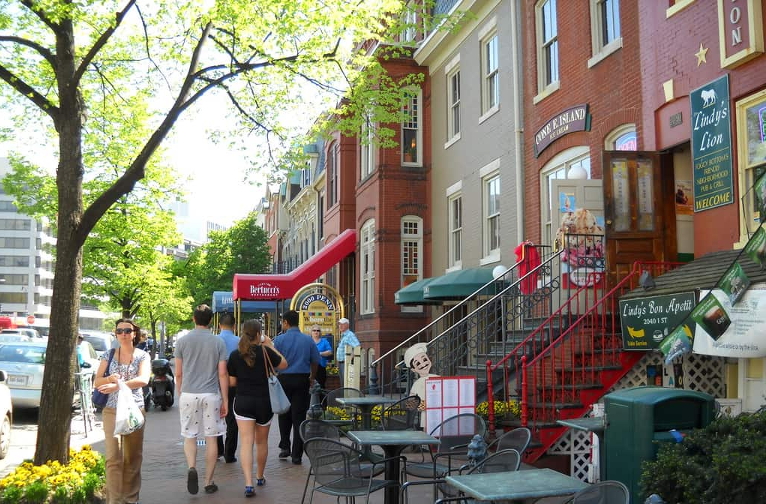What is the value of a street where people can walk safely? Why build streets that are constructed with the needs of people in mind, not just the needs of cars?
Many people concerned with pedestrian safety and “walkability” care about these issues because they feel that walking is good exercise or that walkable places are more attractive or that walking is better for the environment than driving.
These are all valid arguments and may convince some of those reading this article that walkability is important. But what I want to talk about today isn’t an argument based on values or aesthetics. It’s an argument based on pure dollars and cents — one that should convince people with a myriad of values and political leanings that people-oriented places must be a priority if we want our communities to be economically prosperous.
Again and again, when we look at streets oriented toward people — that is, streets where walking is safe and enjoyable, that people are drawn to visit on foot, and where fast and extensive car traffic is not the #1 priority — we find that they are more economically productive than any other style of development. This is particularly true when we compare people-oriented places to car-oriented places—think of that stretch of your town that effectively does everything possible to discourage walking and biking, including a street with multiple wide lanes to ensure fast car movement, acres of parking, and minimal (if any) sidewalks, bike lanes and crosswalks.
Walkable streets, on the other hand, encourage business activity, generate greater tax revenue per acre and offer a higher return on investment than auto-oriented streets.
PEOPLE-ORIENTED STREETS ENCOURAGE BUSINESS ACTIVITY
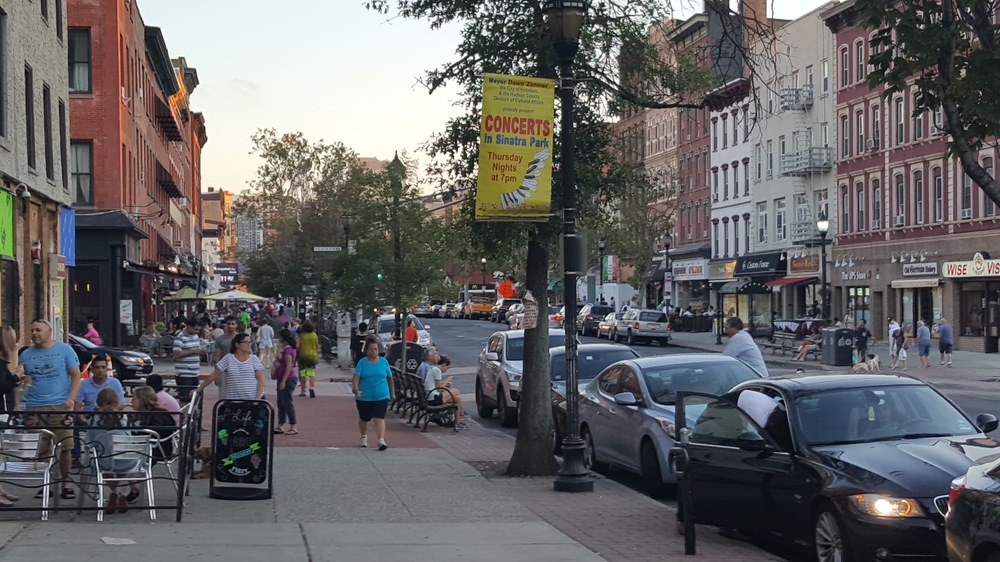
Source: Andrew Price
Streets where walking is safe and easy are streets where businesses usually thrive. A number of studies have confirmed this over the last several years.
For instance, in a 2011 report for Australia’s Heart Foundation, Dr. Rodney Tolley concludes:
Streetscape enhancements add value to an area and are associated with higher rents and the attraction of new businesses. In addition there is good evidence to show that improving walking and cycling environments raises private property values by significant amounts.
Indeed, in 2009, our friend Joe Cortright conducted a study that revealed: “In the typical market, an additional one point increase in Walk Score was associated with between a $500 and $3,000 increase in home values.” (Walk Score is an online system that ranks how walk-friendly a particular location is.)
Furthermore, a pivotal report by Elizabeth Bent and Krute Singha of the San Francisco County Transportation Authority uncovered that “travelers using [transit or walking] spend more per month than those traveling by car.” Interestingly, while the amount that transit users and walkers spent at area businesses on each trip was less than the average car driver’s spending, the transit users and walkers made more trips per month, which added up to higher spending overall.
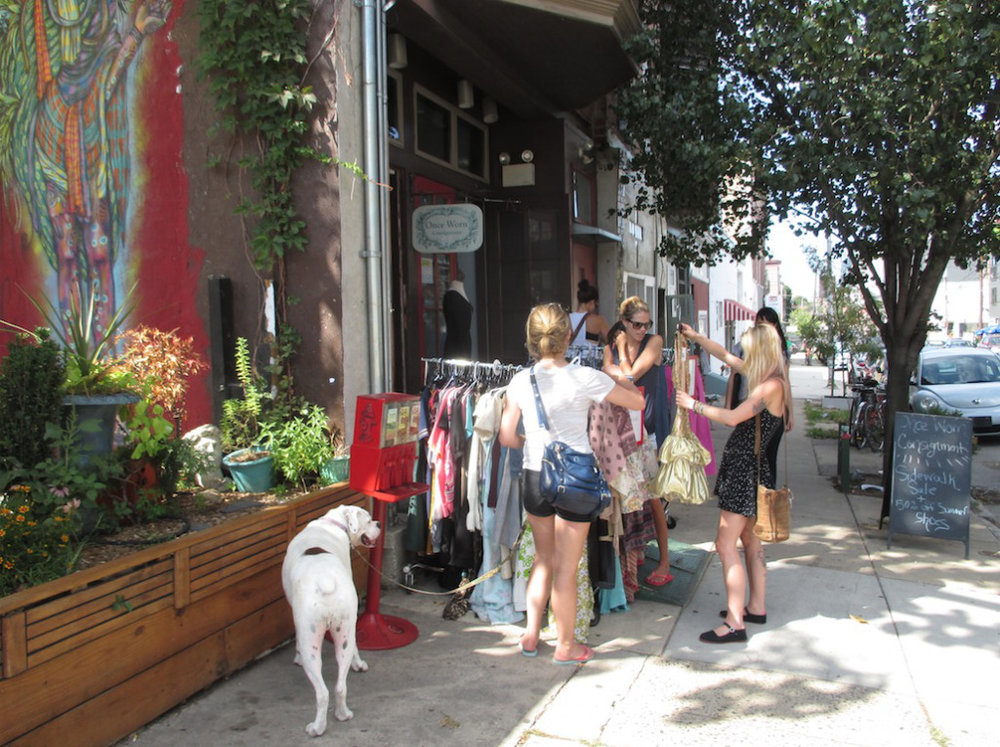
Source: Johnny Sanphillippo
In truth, you don’t really need a study to tell you these things. Visit the most thriving commercial district in any city — the one full of shops and restaurants and people — and I would bet that it’s an area where walking is prioritized.
A walkable street ensures that people can safely cross from a clothing store to a coffee shop and spend money at both. It means that people who live in the neighborhood can grab groceries and other necessities easily, so they’ll probably visit nearby establishments more often. Perhaps most importantly, a walkable street is one in which many businesses occupy the bulk of the land, meaning that dozens of destinations can be accessed in a matter of minutes on foot, and that every inch of land is put to economically productive use — not squandered in empty parking lots or unnecessary landscaping.
PEOPLE-ORIENTED STREETS ARE MORE FINANCIALLY PRODUCTIVE PER ACRE
We’ve got data unequivocally showing that people-oriented streets are more economically productive than auto-oriented streets — from big cities to small towns, from the heartland to the South. Our friends at Urban3 spend much of their time visiting cities and towns across the nation to analyze their tax productivity, comparing how much tax revenue is produced per acre in different areas. What they’ve consistently found is that compact, walkable places produce far more tax value per acre than auto-oriented places—and that holds true in communities across America.
The following images created by Urban3 visually illustrate the tax value per acre of every plot of land in four geographically diverse communities and this pattern is evident in all of them. In these maps, a tall plot means a high tax value per acre while a low plot indicates a low tax value. (In the case of the Lafayette map, taller green plots are revenue positive for the city while taller red plots are revenue negative.)
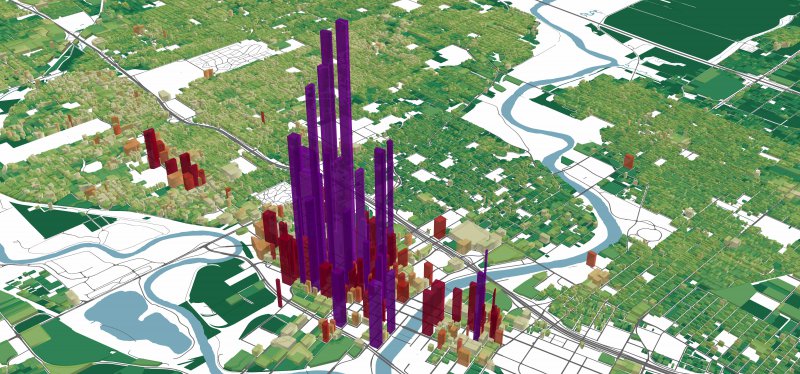 Des Moines, IA
Des Moines, IA
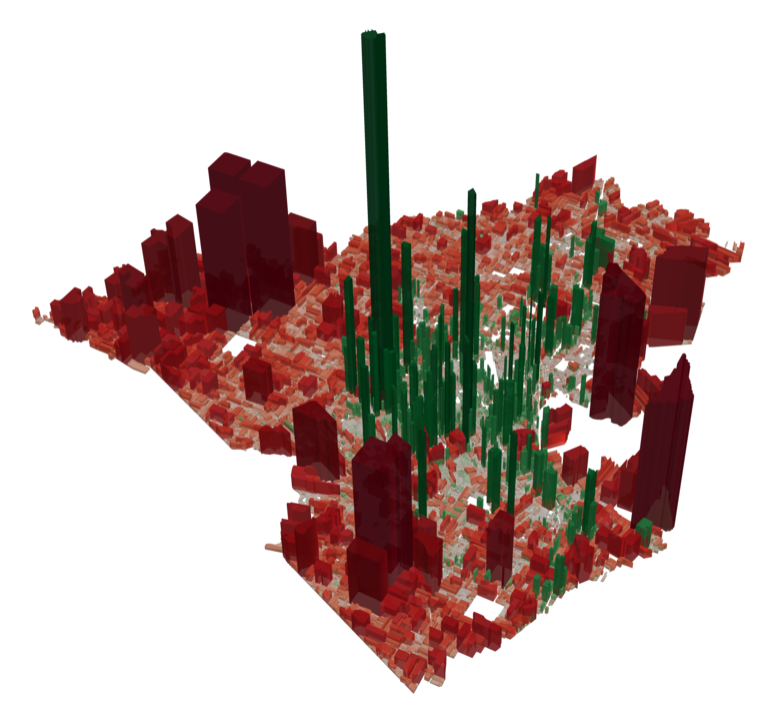 Lafayette, LA
Lafayette, LA
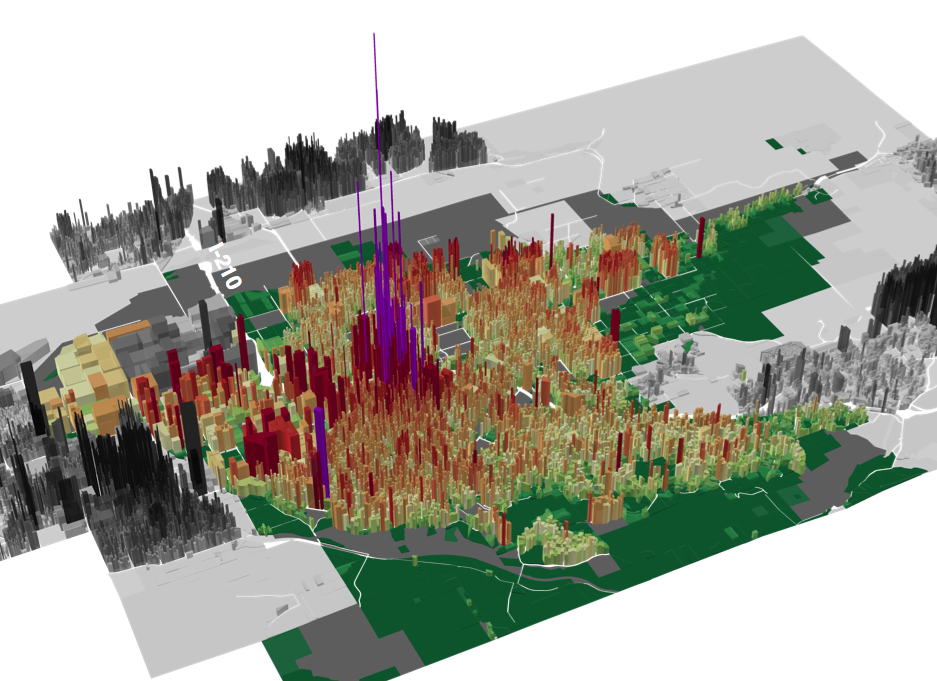 Redlands, CA
Redlands, CA
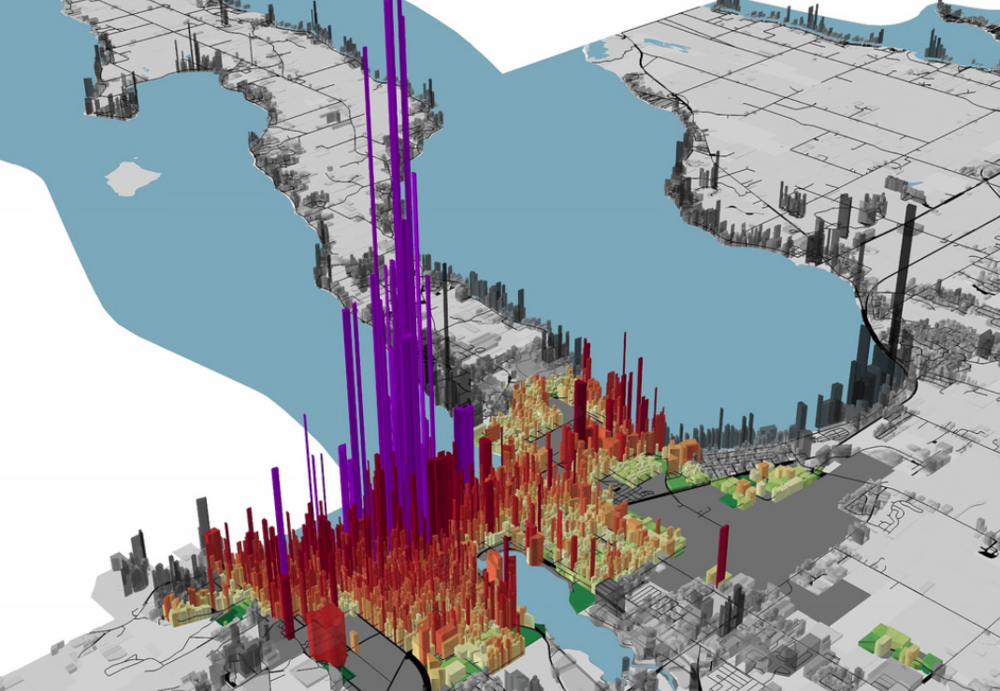 Traverse City, MI
Traverse City, MI
In every single image, the people-oriented, historic city centers are the ones that rise far above the surrounding auto-oriented land in terms of tax value per acre.
Here’s what those city center spikes look like for the average person walking…
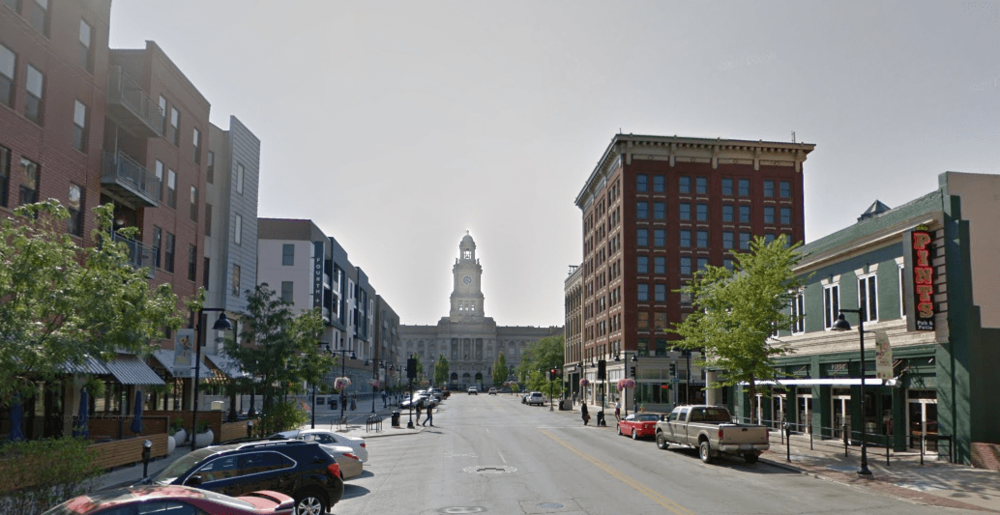 Downtown Des Moines
Downtown Des Moines
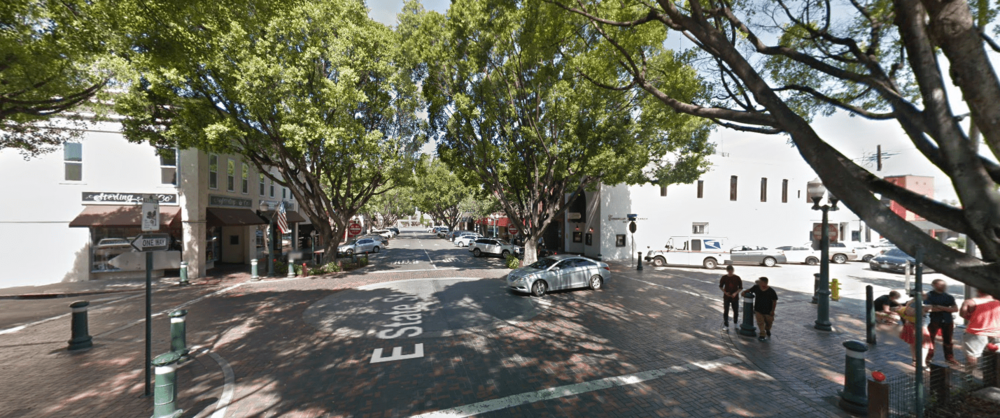 Downtown Redlands
Downtown Redlands
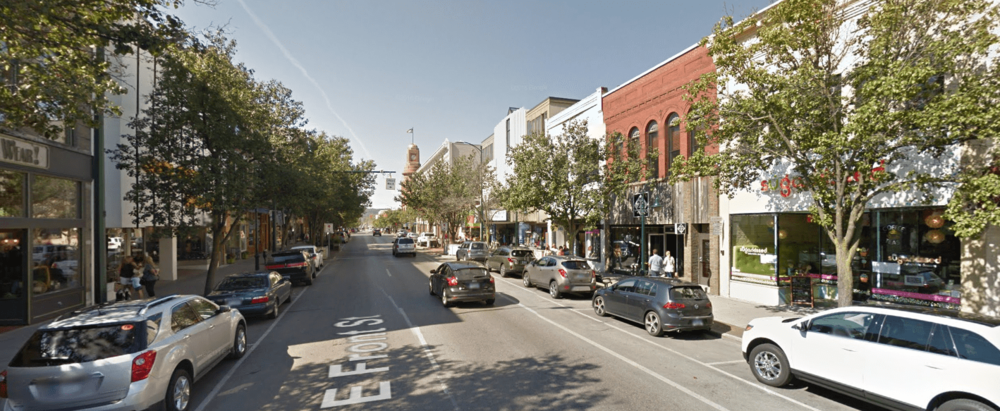 Downtown Traverse City
Downtown Traverse City
What do these places all have in common?
- Streets are fairly narrow with no more than two lanes of traffic and parking on either side — all of which means cars must drive slowly.
- Sidewalks are present in every image and bump-outs, crosswalks and signals make it easy for people to cross the street.
- Trees offer shade to people walking (especially important in warmer climates like Louisiana and southern California).
- Businesses open right onto the sidewalk, easily accessible to passersby on foot and attracting the attention of people driving slowly as well.
- Residences and offices occupy the second (and in some cases, third, fourth and fifth) floors of these buildings providing additional tax revenue and putting more people within walking distance of the local businesses below.
Meanwhile, here’s what the auto-oriented areas on the edge of each town look like…
 Edge of Des Moines
Edge of Des Moines
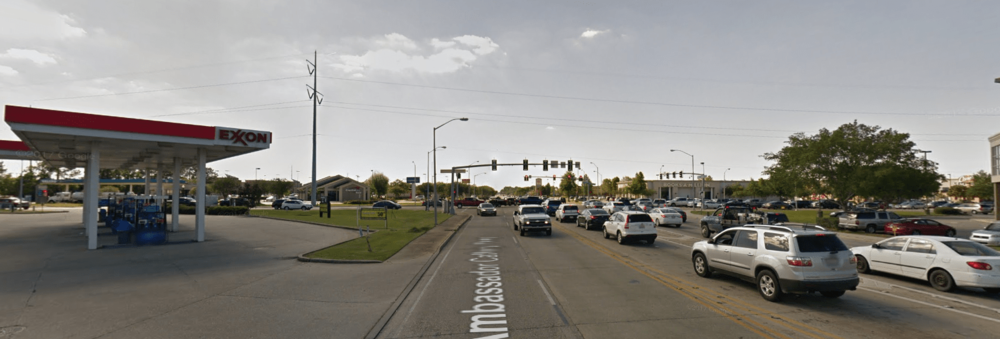 Edge of Lafayette
Edge of Lafayette
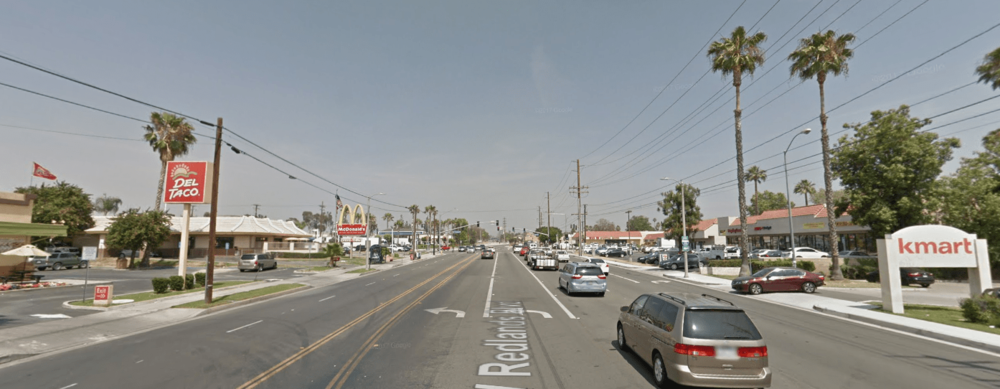 Edge of Redlands
Edge of Redlands
 Edge of Traverse City
Edge of Traverse City
In these images, everything is built around the car:
- We see wide roads with multiples lanes of traffic and no on-street parking — all of which induces fast driving.
- While most of these images do contain a sidewalk (if you look very closely), none of them appear to be inviting places to walk, what with cars whipping by quickly right next to anyone walking.
- Crosswalks are spaced far apart, if there are any at all. Anyone who wanted to cross the street in these images would have to walk a long way to the nearest stoplight and then sprint across several lanes of traffic in order to get to the other side.
- The only greenery to be seen are empty lawns that serve no purpose. No trees shade the sidewalk.
- Businesses on the edge of town require large signage that can be seen from inside a fast-moving vehicle—not small details that a passerby on foot might appreciate.
- Every single business has a large parking lot in front of it, rather than more buildings that could house more economically productive businesses.
- Buildings are only one story tall, which means that destinations are more spread out and tax revenue for each plot of land can only come from one business.
This pattern repeats itself in towns and cities across America. When we build for people, we get economically prosperous places. When we build for cars, we get low-value developments. The result is that the urban core is almost always financially propping up the entire city.
PEOPLE-ORIENTED STREETS PROVIDE A BETTER RETURN ON INVESTMENT
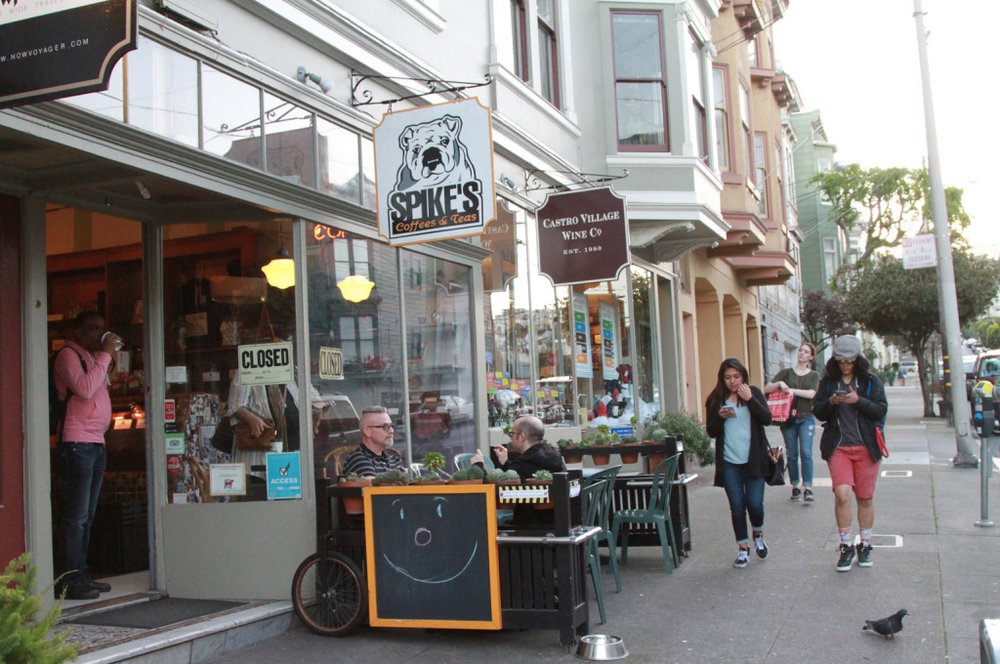
Source: Johnny Sanphillippo
But streets where walking is easy and safe are not just economically significant because of their impact on retail sales or tax values. They are also economically significant because of their incredibly high return on public investment.
The cost of paving sidewalks for people is minuscule compared with the cost of paving wide roads for cars, installing traffic signals, paying the salaries of traffic cops, etc. Even the cost of providing enhancements to pedestrian space such as trees and benches pale in comparison to what we spend when we build around cars.
Furthermore, the wear and tear caused by foot traffic is also negligible compared with the wear and tear caused by car and truck traffic, meaning that long-term maintenance costs for walk-friendly areas are also much lower than for auto-oriented places. (Ironically, most cities spend exponentially more on their roads while utterly neglecting their sidewalks.)
In short, a simple sidewalk could serve millions of people traveling on foot for decades, even centuries, with only a small amount of up-front investment and minimal maintenance costs for the city — yet it would support dozens or hundreds of local businesses. The same length of street designed primarily for cars would cost exponentially more to build and keep up and would only serve a handful of businesses.
And if that’s not enough to convince you, remember that it’s not just walking infrastructure that’s more affordable to build and maintain in and of itself. The businesses and homes that exist in walkable areas also provide a better return on investment than the buildings in auto-oriented areas. The two streets below— one people-oriented and one auto-oriented — illustrate this clearly.

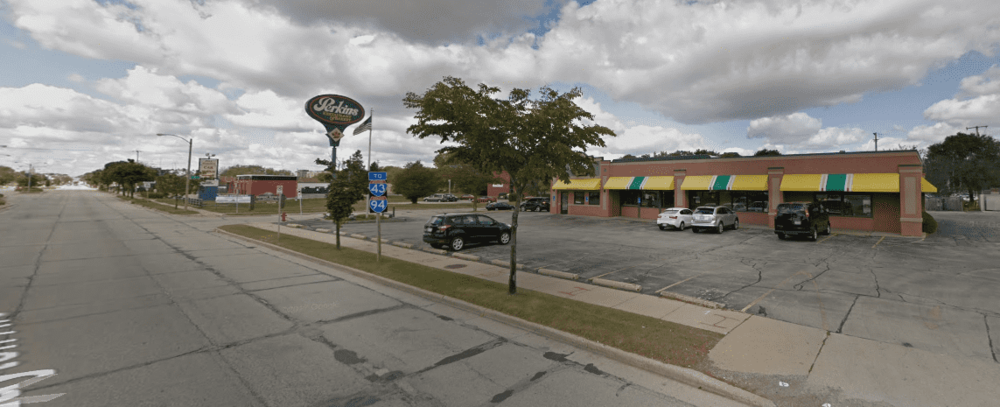
In the first photo, we see that just one side of this walkable block is occupied by more than a dozen businesses, most of which have apartments or offices above them. Most of the buildings are 100+ years old and have been home to countless businesses and residences since they were constructed. Those initial investments we made a century ago are paying amazing dividends today.
In the second photo, we see a similar length of auto-oriented street whose buildings were constructed much more recently and will likely only ever serve on purpose: to house a Perkins restaurant.
The businesses in the first photo get to use all of their space for actually conducting business — serving food, selling products, and so on. Meanwhile, the lone Perkins in the second photo has to reserve most of its space for a parking lot and a large sign.
Invest in an auto-oriented street and you are temporarily filling a space that will likely be empty in a decade, draining life and tax value from your town.
Invest in a people-oriented street and you have created value that will continue to benefit your town for decades and even centuries to come.
Read more from our #SlowtheCars campaign.
(Top photo source: Dewita Soeharjono. Thank you to Urban3 for sharing these graphics with us.)


